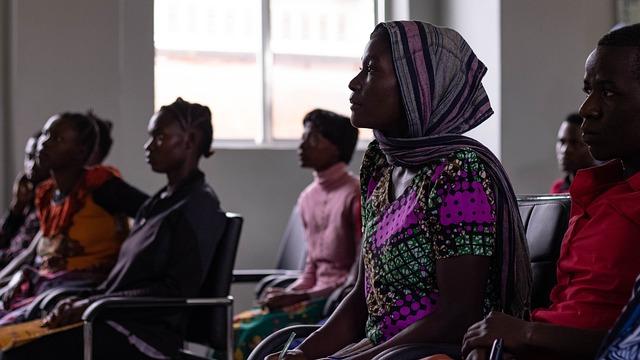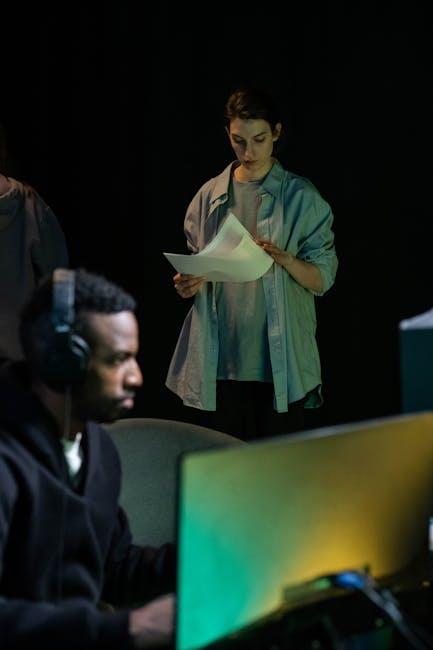In the ever-evolving landscape of film and television, the art of storytelling hinges not only on compelling narratives but also on the intricate dance of pacing and editing. As new releases flood streaming platforms and theaters, the impact of these elements on audience experience becomes increasingly profound. Pacing dictates the rhythm and momentum of a story, guiding viewers through emotional peaks and narrative valleys, while editing choices shape the very lens through which a story is perceived. Together, they craft a visceral experience that can captivate or alienate audiences. This article delves into how these crucial components influence viewer engagement and emotional resonance, offering insights into the delicate balance filmmakers must strike to leave a lasting impression. Audience Engagement“>
Audience Engagement“>
Understanding the Impact of Pacing on Audience Engagement
In the realm of film and television, pacing serves as a critical component that directly influences audience engagement. The rhythm of a narrative can dictate the emotional and intellectual investment of viewers, guiding their reactions and shaping their overall experience. A well-paced story allows for moments of tension and relief, balancing action with introspection. This delicate equilibrium ensures that audiences remain captivated, eagerly anticipating each subsequent scene.
- Quick Pacing: Keeps the audience on their toes, often used in thrillers and action films to heighten excitement.
- Slow Pacing: Encourages deeper emotional connections, often seen in dramas and character-driven stories.
- Variable Pacing: Combines different speeds to maintain interest, providing dynamic shifts that can surprise and engage viewers.
Editing choices further refine this pacing, with cuts and transitions serving as the tools to manipulate time and space. A strategic edit can amplify tension or provide necessary respite, enhancing the storytelling’s overall impact. Understanding these elements allows creators to craft experiences that resonate deeply with audiences, ultimately defining the success of new releases.
 Editing Techniques in Shaping Viewer Perception”>
Editing Techniques in Shaping Viewer Perception”>
The Role of Editing Techniques in Shaping Viewer Perception
Editing techniques serve as the invisible hand guiding the audience’s emotional and cognitive journey through a film. The deliberate use of pacing can transform a scene’s energy, either by drawing out suspense with lingering shots or by injecting adrenaline through rapid cuts. This manipulation of time is crucial in shaping how viewers interpret and react to the narrative.
Moreover, the choice of editing style can greatly influence the audience’s connection to the story and characters. Consider these elements:
- Continuity Editing: Seamlessly stitches scenes together, maintaining a sense of realism and narrative flow.
- Montage: Juxtaposes images to convey complex ideas or emotions quickly, often creating symbolic meaning.
- Jump Cuts: Breaks the illusion of continuous time, adding an element of surprise or disorientation.
These techniques, employed thoughtfully, do more than just tell a story—they craft a unique viewing experience, engaging the audience on multiple levels and leaving a lasting impression.
Balancing Speed and Clarity for Optimal Viewer Experience
In the intricate dance of filmmaking, the rhythm of pacing and the precision of editing play pivotal roles in shaping how audiences perceive a story. Striking the right balance between speed and clarity ensures that viewers remain engaged without feeling overwhelmed or confused. A fast-paced narrative can keep adrenaline levels high, but without careful editing, it risks losing coherence. Conversely, a slower pace allows for deeper character exploration and thematic development, but it may test the patience of an audience eager for action.
To achieve an optimal viewer experience, creators often employ a mix of techniques:
- Dynamic Transitions: Seamless transitions between scenes can maintain narrative flow while enhancing visual storytelling.
- Strategic Cuts: Purposeful editing choices help focus attention, ensuring that key moments resonate with impact.
- Rhythmic Variations: Alternating between fast and slow sequences can create tension and relief, maintaining viewer interest.
By carefully calibrating these elements, filmmakers can craft experiences that are not only compelling but also memorable, resonating long after the credits roll.

Practical Editing Strategies to Enhance Narrative Flow
Achieving a seamless narrative flow often hinges on strategic editing choices that keep the audience engaged. One effective approach is to vary sentence lengths. Short, punchy sentences can heighten tension and urgency, while longer, more complex sentences allow for deeper reflection and immersion. This variation can be particularly impactful in new releases where maintaining audience attention is crucial.
Another strategy involves the judicious use of scene transitions. Smooth transitions can prevent jarring shifts that disrupt the narrative’s rhythm. Consider these techniques:
- Cross-cutting: Alternating between two or more scenes to build suspense.
- Fade-ins and fade-outs: Providing a visual or textual breath between intense sequences.
- Match cuts: Linking scenes with visual or thematic similarities to maintain continuity.
By thoughtfully employing these strategies, editors can craft a narrative flow that not only captivates but also resonates with the audience, enhancing their overall experience.

